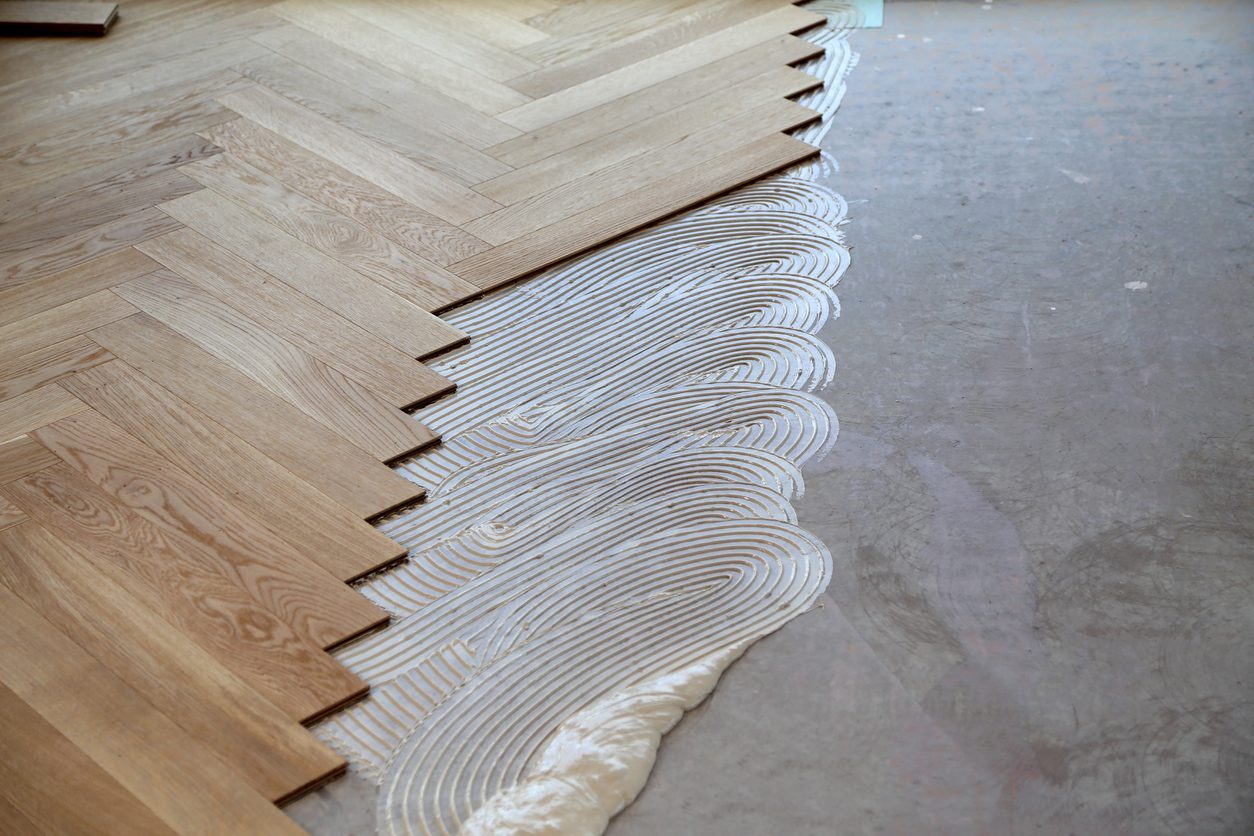When installing hardwood flooring, one of the most important decisions is choosing between a glued-down or floating installation method. While both options have their place, glue-down installation is generally the superior choice because it provides a more secure and stable floor.
If you’re considering hardwood flooring for your home, understanding the differences between these two installation methods can help you make the best decision.
Why Glued-Down Installation is Recommended
The glue-down method involves applying adhesive to the subfloor and securing the hardwood planks directly to it. This method is commonly used for both engineered and solid hardwood flooring and offers several key benefits:
1. A More Secure and Stable Floor
One of the biggest drawbacks of a floating floor is that it isn’t physically attached to the subfloor. If there are any low spots or uneven areas, the flooring can bounce or flex, which can eventually cause damage. When your hardwood floor moves too much, it puts stress on the tongue and groove connections, potentially leading to cracks or broken sections that are difficult and costly to repair. A glued-down floor eliminates this issue by securing each board firmly in place.
2. Less Movement, Fewer Gaps
Floating hardwood floors are designed to expand and contract naturally, but excessive movement can create unsightly gaps between boards over time. This is especially problematic in areas with fluctuating humidity levels. Glued-down floors, on the other hand, stay in place and minimize movement, ensuring a seamless and long-lasting appearance.
3. Ideal for Concrete Subfloors
If you’re installing hardwood over a concrete subfloor, a glue-down method is often the best (and sometimes required) option. Many high-quality hardwood adhesives also serve as a moisture barrier, preventing moisture from seeping into the wood and causing warping or cupping. Since concrete naturally retains moisture, this extra layer of protection is critical for maintaining the longevity of your flooring.
When is a Floating Floor a Good Option?
Floating hardwood floors, where planks are locked together without adhesive, can be a viable choice in certain scenarios. For instance:
- DIY-Friendly – Floating floors are easier to install, making them a popular choice for DIY enthusiasts.
- Less Expensive Installation – Since there’s no glue or nails involved, installation costs can be lower.
- Can Be Installed Over Existing Floors – Floating floors can sometimes be installed over existing tile, laminate, or other surfaces without requiring major floor prep.
However, despite these advantages, the downsides of floating hardwood floors—excess movement, bouncing, and potential damage—often outweigh the benefits in the long run.
The Bottom Line
If you’re investing in hardwood flooring, a glued-down installation is the best choice for durability, stability, and longevity. This method ensures a firm, gap-free surface that won’t move excessively or develop weak points over time. Additionally, when installing over concrete, the right adhesive can also function as a moisture barrier, protecting your hardwood from potential damage.
While floating floors may be tempting for ease of installation, they come with risks that could lead to costly repairs and an overall less stable floor. For a hardwood floor that looks great and lasts for decades, glue-down installation is the recommended method.
Need help choosing the right hardwood flooring for your project? Contact us today to find the best options for your home!
